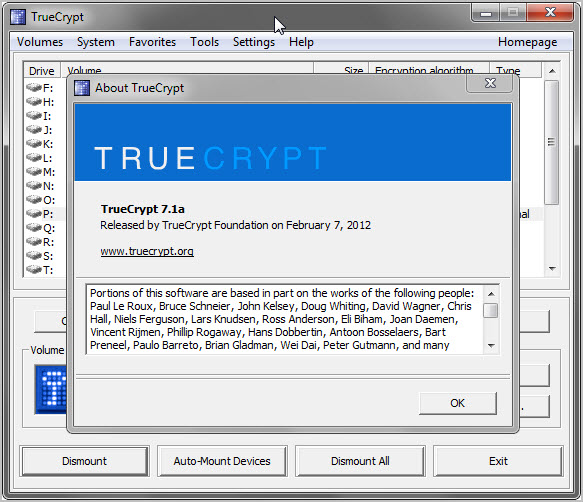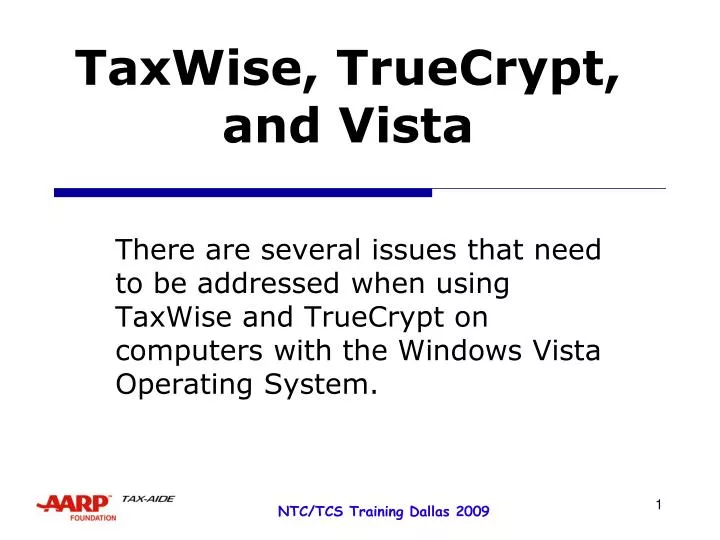
Thieves aren’t just after your hardwareĪ thief can probably make a few hundred bucks fencing a stolen laptop. Here are the top three risks associated with having an unencrypted hard drive. But if you are like the vast majority of personal or business computer users, you have valuable data that warrants protection. If all you use your computer for is reading Reddit in Incognito Mode, then you probably don’t need to encrypt your data. Just everyone who has personal or financial information on their computer, such as tax returns, stored passwords, browsing history, emails, resumes, address books, photos and videos, utility bills, account histories, etc. Not everyone should encrypt their system disk. Why Everyone Should Have an Encrypted System Disk
#Using truecrypt how to
#Using truecrypt password
The script above just inserts a newline after the password and makes things work fine. Then truecrypt does not recognize the password. Libpam-mount sends the password to truecypt without newline. It is a workaround for some bug in either libpam-mount (version 0.32-4) or truecrypt. # This is /usr/bin/truecrpyt-nl append a newline to the password. This is a shellscript, that we have to put into ‘/usr/bin/’: #!/bin/sh Note that we use truecrypt-nl instead of truecrypt.

Truecrypt-nl -text -protect-hidden=no -keyfiles="" %(VOLUME) %(MNTPT) Protect hidden volume? (y=Yes/n=No) truecrypt -text -lġ: /home/private/bart.tc /dev/mapper/truecrypt1 mkfs.ext2 mount /dev/mapper/truecrypt1 shopt -s dotglob #make dotfiles mv /home/bart/* chown ers umount truecrypt -d /dev/mapper/truecrypt1 Next, we need to format the encrypted partition and move the old home directory into truecrypt -text -filesystem=none /home/private/bart.tcĮnter password for /home/hgerlach/newcrypt.tc: ************* Then we assign the same password as the login password to bart: passwd bart The TrueCrypt volume has been successfully created. Please type at least 320 randomly chosen characters and then press Enter:ĭsglregmm adsf dsafdsasasadfdsafdsagfdsadsafdsafdsafadsfdsahfarweqasddsaglfdsakg lrewqk lggkqqqqqewrgsadgdsag.ĭone: 100.000% Speed: 18.0 MB/s Left: 0 s Are you sure you want to use a short password? (y=Yes/n=No) : y We recommend choosing a password consisting of more than 20 characters.
#Using truecrypt crack
WARNING: Short passwords are easy to crack using brute force techniques! truecrypt -create /home/private/bart.tcĮnter volume size (bytes - size/sizeK/sizeM/sizeG): 1G We start with the user bart (if you leave out the -text you’ll get a graphical user interface). To keep them we create a directory: mkdir /home/privateįor each user we have to create an encrypted file in /home/private. We will create one file for each user to hold his encrypted home directory.
#Using truecrypt install

Update: There is a more current version of this post dealing with TrueCrypt 6.2 and Ubuntu 9.04: Automatic encryption of home directories using TrueCrypt 6.2 and pam_exec. I copy redundant parts from the old one). For convenience this post will be selfcontained (ie. Futhermore we’ll use Ubuntu 8.04 Hardy Heron instead of Debian Etch. This time we’ll use TrueCrypt 6.0a which is a bit different from 4.3a used last time.

I wrote about Automatic encryption of home directories using TrueCrypt before. This post describes how to encrypt the home directory of your users on GNU Linux with the help of TrueCrypt and PAM using the login-password as encryption key.


 0 kommentar(er)
0 kommentar(er)
